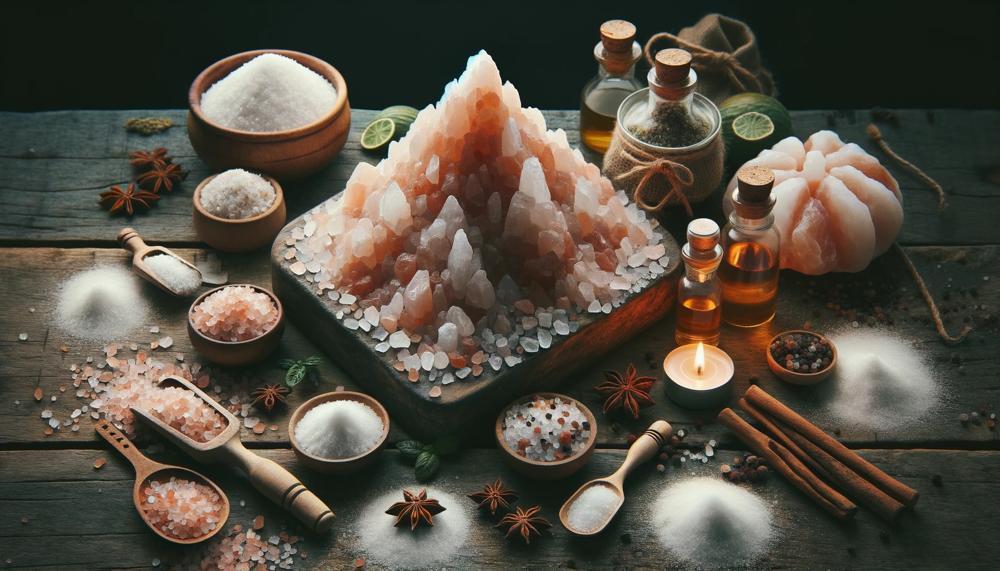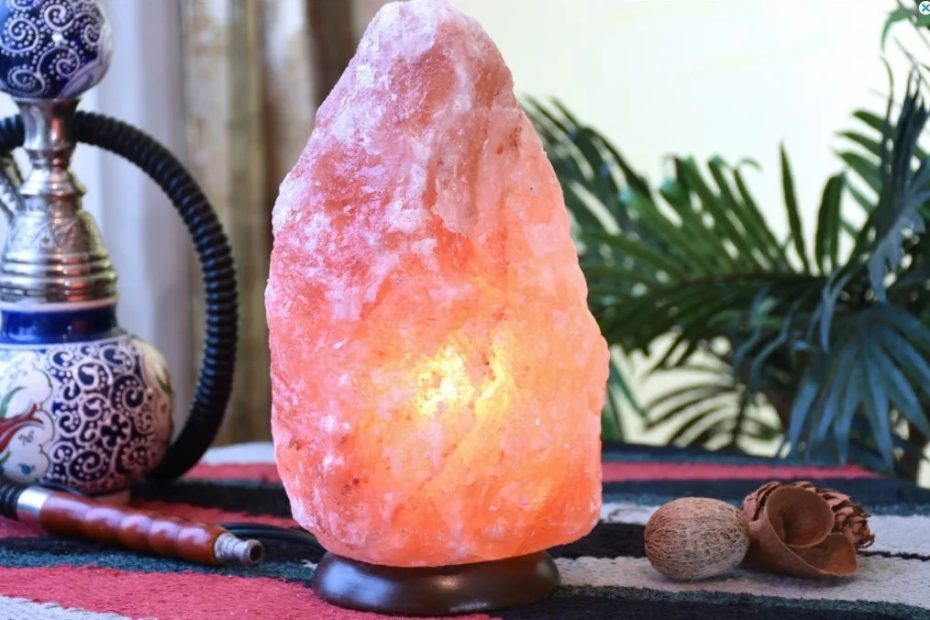In the vibrant world of culinary delights and wellness trends, Himalayan salt has carved out a niche for itself, praised for its purported health benefits and unique pink hue.
Yet, as its popularity soars, so does the proliferation of counterfeits, muddying the waters for enthusiasts keen on integrating this natural wonder into their lives.
Understanding the nuances that distinguish authentic Himalayan salt from impostors is not just about preserving the integrity of your dishes or spa routines; it’s about embracing a lifestyle choice grounded in authenticity and quality.
This blog post aims to demystify the process of identifying genuine Himalayan salt, providing our readers with a beacon of insight in an otherwise murky marketplace.
So, How To Tell If Himalayan Salt Is Real?
Here are some ways to tell if a Himalayan salt lamp is real:
- Color: Authentic lamps have a warm, cozy color that’s a little dim in some parts. Shiny-surfaced lamps are probably not made of Himalayan salt.
- Light: The light from real salt lamps is uneven because the salt structure is uneven in its natural form. The light should not emit too much light the way an incandescent bulb does.
- Texture: Authentic lamps have a slightly rough and irregular surface, often with natural blemishes like cracks or lines.
- Weight: Genuine salt lamps feel heavy for their size due to the density of Himalayan salt.
- Moisture test: Real Himalayan salt is hygroscopic, meaning that it attracts moisture from the air. You can test if the salt lamp is real by placing it in a humid room for a few hours. If the lamp is real salt, it should begin to sweat and feel moist to the touch.
- Rubbing test: Gently rub the lamp with a wet cloth. You should notice discoloration of the cloth from the salt (red or pink) and the lamp should look like it’s weeping.
- Internal bulb: Check the internal bulb inside your salt lamp. You can carefully do that by unplugging it and pinching those spring-loaded prongs together and pulling that light bulb housing out again. If it’s an LED bulb, that’s an immediate red flag.
Armed with these insights, our readers can navigate the market with confidence, ensuring that their choice enhances not only the flavor of their meals but also the authenticity of their wellness journey.
Contents
Best Salt Lamp
Choosing the Best Salt Lamp involves a mix of understanding its purpose, recognizing its potential benefits, ensuring its safety and authenticity, and finding a design that complements your space. Here’s a straightforward guide to selecting your ideal Himalayan salt lamp, combining expert advice and consumer wisdom.
| Factor | Details to Consider | Why It’s Important |
| Purpose | Is it for meditation, an accent piece, or health benefits? | Aligns the lamp’s features with your specific needs. |
| Benefits | Improves air quality, boosts mood, assists with SAD/depression. | Ensures the lamp offers more than just aesthetic value. |
| Size and Price | Balance between budget and size based on intended use. | Finds the right lamp that fits both your space and wallet. |
| Safety | Look for UL-certified lamps to guarantee electrical safety. | Prevents any potential hazards related to electrical components. |
| Origin and Authenticity | Sourced from Pakistan, hand-carved from pure crystal rock salt. | Confirms you’re getting a genuine product with expected benefits. |
| Design | Various shapes, colors, and designs to fit your decor. | Ensures the lamp blends well with your personal style. |
| Additional Features | Dimmer switches, battery-powered options. | Adds convenience and enhances usability. |
| Customer Reviews | Insights into product quality and effectiveness. | Helps you gauge real-world performance and satisfaction. |
Before buying, perform a simple test for authenticity: check the lamp’s response to moisture, observe its color uniformity, and assess its texture. A genuine Himalayan salt lamp will attract moisture and may show condensation; it should have a consistent pink hue and a rugged texture.
Be wary of lamps that don’t exhibit these natural properties or dramatically change colors, as they might be counterfeit.
Taking these factors into account, you’re well-equipped to select a Himalayan salt lamp that not only beautifies your space but also brings a serene ambiance and potential health benefits into your home.
Things To Look For To Avoid Himalayan Salt Lamp Hoax
| Price Too Good to Be True | Authentic Himalayan salt lamps aren’t bargain bin finds. They’re crafted from scarce Himalayan salt, found only in specific locales. Spot a lamp at a dirt-cheap price? Odds are, it’s a dud. |
| Featherweight Feel | Real Himalayan salt lamps pack some heft, courtesy of dense salt crystals. If the lamp you’re eyeing up feels like it’s on a diet, chances are it’s fake, possibly bulked up with fillers or plastic, not pure salt. |
| Unnatural Hues | A genuine lamp glows with a soft pink or orange tint, thanks to the minerals in the salt. Encounter a lamp flaunting a psychedelic pink or a fiery orange? Likely, it’s had a run-in with dyes, not a feature you want when it warms up. |
| Lack of UL Certification | UL certification is like a lamp’s badge of honor, proving it’s passed safety tests. No badge? Best give it a miss. |
| Too-Good-To-Be-True Health Claims | While they’re a charming addition to any room, Himalayan salt lamps aren’t miracle workers. Sellers promising the moon and stars for your health might just be spinning tales. |
| Bulk Bargains | True Himalayan salt lamps are artisans’ work, not churned out en masse. Stumble upon a “wholesale deal”? It’s a red flag waving you away from authentic picks. |

Keep these tips in your toolkit, and you’re less likely to fall for a faux lamp.





